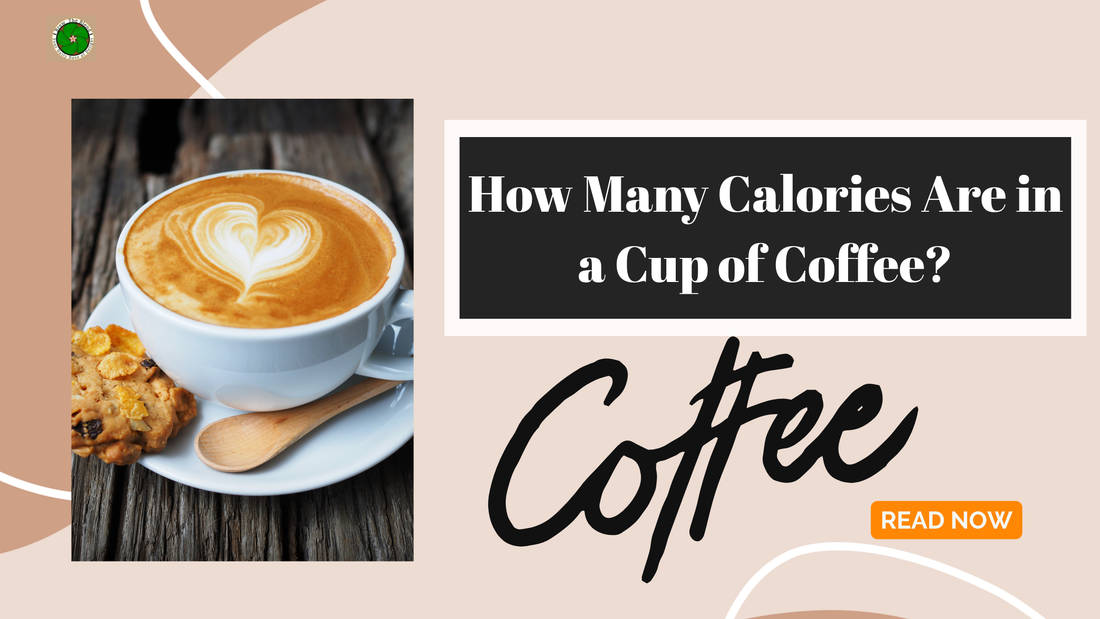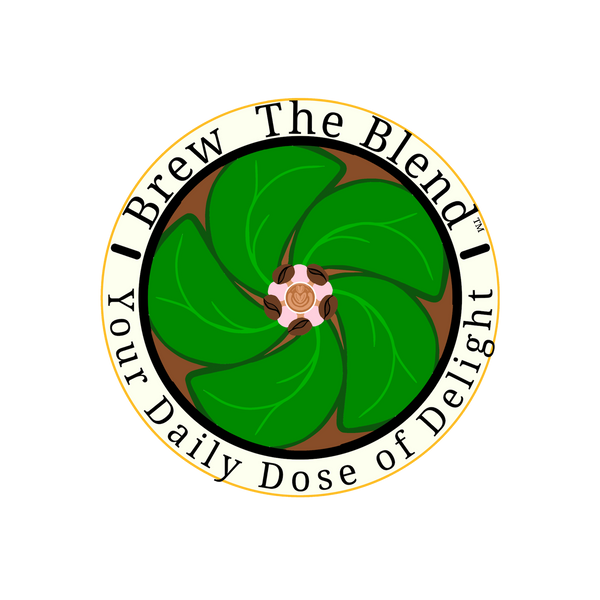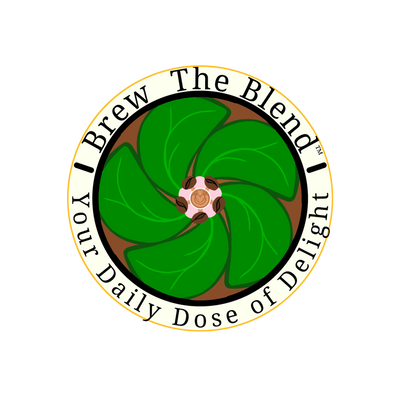
How Many Calories Are in a Cup of Coffee?
Mornings feel incomplete without that familiar aroma. Whether it’s sipped slowly during a sunrise or grabbed in a rush between meetings, coffee has earned its place at the daily table. But somewhere between that first comforting sip and the second refill, one curious thought often sneaks in—how many calories are in a cup of coffee?
It’s easy to assume coffee is just hot water and beans, but the calorie count doesn’t end there. Milk, a spoonful of sugar, and the cream swirl add their numbers to the mix.
Understanding the calories in coffee doesn’t mean giving up your favorite cup—it just means finding a new way to enjoy it with a little more awareness.
What’s in your cup?

From a simple brew to a creamy latte, what you pour into your mug adds up. If you’ve ever paused mid-sip and wondered what the cause of that caffeine hit is, let’s break it down.
1. Coffee Calories per cup
Before adding anything, let’s review what’s in the base. Brewed plain, an 8-oz cup of drip coffee has coffee calories per cup ranging between 1 and 5, which are almost negligible. But that’s when it’s black, with no additions.
Most people rarely drink it this plain. The numbers creep up faster than expected once you add even a tiny splash of milk or sugar. So, if your day begins with three big cups, your total could be higher than you think.
2. Black Coffee Calories
Black coffee calories are impressively low—think two or fewer for a standard 240 ml cup. With zero sugar, no milk, and no creamers, this is as basic as coffee gets. It’s the go-to choice for people watching their intake but still craving that energy jolt. It’s also popular before workouts, and for good reason.
No frills, just the beans, hot water, and that bold flavor.
3. Coffee with Milk Calories
Adding milk to your cup can quickly stack up calories. A small pour of full-cream milk adds between 20 and 40 calories, depending on how generous your hand is. Coffee with milk calories rises even faster with sweetened or condensed varieties.
Switch to low-fat or plant-based milk? The calories per serving will still range from 10 to 35. Milk softens the punch for those who don’t like the harshness of black coffee.
4. Calories in Coffee with Sugar
Just one teaspoon of sugar contains about 16 calories. Two teaspoons? That’s 32. Now add those calories to the ones from milk, and you're quickly reaching 70 to 100 calories per cup. Calories in coffee with sugar can quietly rack up, especially if your habit is sipping it several times a day.
Add syrupy flavorings or whipped toppings, and it becomes a dessert dressed up as coffee. Sweet cravings are real, and coffee makes it easy to satisfy them.
Sugar, milk, and everything extra.
Black coffee is one of the leanest beverages, containing about two calories per 240 ml cup. It has no sugar or cream—just roasted beans doing their job. It wakes you up, sharpens your mind, and doesn’t affect your waistline.
But the story rarely ends there, does it?
Imagine adding just one teaspoon of sugar — you’ve added 16 extra calories. If you pour in full-fat milk (let’s say 30 ml), that adds around 20 more calories. Suddenly, your cup has nearly 40 calories. If you drink three cups like this every day, that’s 120 calories circulating in your bloodstream.
Flavored creamers? Add 35 to 70 calories per tablespoon. Whipped cream? Another 50 to 100 calories, depending on the size of your dollop. Caramel drizzle, vanilla syrup, frothy foam? Each brings its calorie squad.
That original 2-calorie black coffee? It’s now dressed in desert clothes, casually pushing your cup to 150 calories or more.
But if you're sipping, intending to keep things light, it might be worth holding back on “everything extra.”
Also Read: How many scoops of coffee per cup?
When coffee becomes dessert

One black coffee, zero guilt. But the moment you stir in sugar, pour in cream, or go wild with syrup, that cup changes its tune. Suddenly, it’s less of a drink and more of a dessert. Let’s see how an innocent brew turns calorie-rich with just a few standard “upgrades.”
1. Sugar Sneaks in Beyond Sweetness Alone
Adding sugar is like inviting calories to crash your coffee party. Just one teaspoon of sugar adds 16 calories. And most people add two or three. That’s up to 48 calories before you’ve even taken a sip.
Suddenly, coffee without sugar calories doesn’t seem so dull after all. While a black brew stays under five calories, your sweetened version may flirt with numbers that belong in a dessert section.
2. Milk Makes It Creamy—and Caloric
A splash of milk might seem harmless, but even a modest pour (about 30 ml of full-fat milk) brings in 20–30 calories. Add that to sugar, and your cup’s calorie count jumps quickly. Want it creamier? That means more milk and more calories.
Suddenly, the calories in a cup of coffee increase from 2 to over 70. The change is so subtle that you won’t notice it, but your body keeps track.
3. Whipped Cream and Syrups
This is where your coffee starts wearing dessert makeup. Whipped cream adds about 50 to 100 calories, depending on the size of your “dollop.” Caramel, hazelnut, and chocolate syrups?
Each pump contributes about 20–25 calories; most café drinks utilize at least two pumps. Suddenly, your drink contains more calories than a slice of toast.
4. Iced and Blended Drinks
Most iced coffees, frappes, and mochas contain sugar, sweetened milk, creamers, and syrups. This is how coffee and calories become best friends. A large, blended coffee drink at popular chains can pack upwards of 300 calories—about the same as a burger patty.
Go for iced black or cold brew with cinnamon or nutmeg.
5. Black Coffee
Stick with the classic if you’re counting macros or watching your waist. Coffee without sugar calories hovers around 2–5 per cup, making it a smart choice any day. Add cinnamon for flavor or a splash of unsweetened almond milk if you need a twist. And no, you don’t have to sacrifice taste.
A good bean, a proper brew, and patience can turn even the plainest coffee into something you crave.
Calories in brewed coffee vs. instant coffee
From your stove-top brew to that quick-dissolving instant pack, there's a slight shift in what goes into your body. Let’s talk about what shows up when you pour that first cup.
1. Brewed Coffee — Almost Zero, But Not Nothing
Most people picture brewed coffee when they hear "coffee" — beans ground fresh and run through a filter or French press. The catch? It’s not entirely calorie-free. A typical 240 ml cup has 2 to 5 calories, depending on how strong you brew it. So, calories in coffee aren't zero — they wear a light coat in this case. Most of those come from the trace oils and compounds released during brewing.
2. Instant Coffee — Small Scoop, Small Spike
Instant coffee may be quicker, but that convenience comes with a pinch more content. A regular serving of instant coffee (about 1 to 2 teaspoons per cup) lands around 4 to 6 calories, a bit higher than its brewed cousin. The reason is that it’s pre-processed and contains additives like anti-caking agents. And let’s not forget flavored sachets — those can go over 50 calories per cup. So, yes, does coffee have calories? It does, and they’re slightly more packed in instant coffee.
3. Brewed Wins for Minimalists
If you prefer straightforward and hassle-free coffee, brewed coffee surpasses instant coffee in calorie control. With fewer additives and no preservatives, it offers a clean pour. If you’re worried about calories, a cup of coffee is typically lower, particularly if you forgo sugar and milk.
4. Use instant coffee when you have limited time.
Sometimes, you don’t have the luxury to grind beans or wait for a drip. That’s when instant coffee steps in. Slightly higher in calorie count but unbeatable in speed, it’s still a decent option if you’re watching your intake. Stick to plain versions, and you’ll keep the calories in coffee low. Skip the 3-in-1s and flavored mixes unless you’re in the mood for a cheat sip — those often exceed 100+ calories per cup. Remember, fast coffee can still be light if you keep the extras off your spoon
What’s Brewing in Your Mug?
Every sip of coffee gives a pleasing aroma and warmth. But how many calories are in a cup of coffee? From the pour of black to the whipped cream, the extra things in the coffee add more calories.
Understanding the nutritional value of coffee involves selecting what goes into your cup. Once that’s clear, every brew feels better. Brew the Blend offers every pack with quality roasted beans. Let your mornings begin with exceptional taste and flavors. Also read: How to make instant coffee from ground coffee
FAQs
Q: How many calories are in a cup of black coffee?
Black coffee has a low-calorie count—2 to 5 calories in a regular 240 ml cup. It does not contain sugar or cream and is brewed with low calories.
Q: How many calories are in a cup of coffee with milk and sugar?
A cup with one teaspoon of sugar and 50 ml of milk can contain 50 to 70 calories. Add more sweetness or full-fat dairy, and your morning sip might start looking like dessert.
Q: Is coffee good during weight loss?
Absolutely—if it’s not wearing a calorie costume. Black coffee can be a great partner when the plate is getting lighter. It keeps cravings away and mornings alive without tagging on extra numbers.
Q: How many calories are in a regular coffee?
That depends on what “regular” means in your kitchen. If it’s black, you’re consuming less than five calories. Add milk and sugar, and it jumps to around 60 to 100.
Q: Does coffee have calories?
Yes. A plain brew is nearly guilt-free. The syrups, sugar, and whipped toppings turn a calorie-light drink into a treat.
Also read more related blogs:


